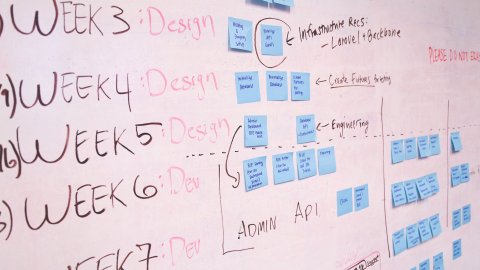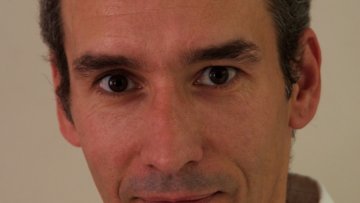Completely Positive Relaxations of Quadratically Constrained Quadratic Programs
Abstract
There is a well established body of research on quadratic optimization problems based on reformulations of the original problem as a conic program over the cone of completely positive matrices, or its conic dual, the cone of copositive matrices. As a result of this reformulation approach, novel solution schemes for quadratic polynomial optimization problems have been designed by drawing on conic programming tools, and the extensively studied cones of completely positive and of copositive matrices. In particular, this approach has been applied to address key combinatorial optimization problems. Along this line of research, we consider quadratically constrained quadratic programs and provide sufficient and necessary conditions for
this type of problems to be reformulated as a conic program over the cone of completely positive matrices. Thus, recent related results for quadratic problems can be further strengthened. Moreover, these results can be generalized to optimization problems involving higher order polynomias.
The Most Minimal Seed for the Onset of Shear Turbulence
Abstract
A key question to develop our understanding of turbulence in shear flows is: what is the smallest perturbation to the laminar flow that causes a transition to turbulence, and how does this change with the Reynolds number, R? Finding this so-called ``minimal seed'' is as yet unachievable in direct numerical simulations of the Navier-Stokes equations. We search for the minimal seed in a low-dimensional model analogue to the full Navier-Stokes in plane sinusoidal flow, developed by Waleffe (1997). A previous such calculation found the minimal seed as the least distance (energy norm) from the origin (laminar flow) to the basin of attraction of another fixed point (turbulent attractor). However, using a non-linear optimization technique, we found an internal boundary of the basin of attraction of the origin that separates flows which directly relaminarize from flows which undergo transient turbulence. It is this boundary which contains the minimal seed, and we find it to be smaller than the previously calculated minimal seed. We present results over a range of Reynolds numbers up to 2000 and find an R^{-1} scaling law fits reasonably well. We propose a new scaling law which asymptotes to R^{-1} for large R but, using some additional information, matches the minimal seed scaling better at low R.
Error bounds for block Gauss-Seidel solutions of coupled problems
Oxford Brain Mechanics Workshop: CMU-Oxford Alliance
Abstract
The 2015 Oxford Brain Mechanics Workshop 19 and 20 January, 2015 in St Hugh’s College, Oxford
Everybody is welcome to attend but (free) registration is required.
The event will include speakers from both CMU and Oxford working on Brain Mechanics and Trauma, as well as some chosen international members from the IBMTL* (www.brainmech.ox.ac.uk).
As well as focusing on various aspects of brain mechanics research, the 2015 Oxford Brain Mechanics Workshop will include the UK launch of the Carnegie Mellon University (CMU) – University of Oxford ‘Brain Alliance’. We are delighted that Dr Subra Suresh, President of CMU will launch the workshop, introduced by Oxford Vice-Chancellor Prof. Andrew Hamilton.
The aim of the workshop is to foster new collaborative partnerships and facilitate the dissemination of ideas from researchers in different fields related to the study of brain mechanics, including pathology, injury and healing. The IBMTL is delighted to be a global partner in CMU’s ‘BrainHub’ initiative and further extend the truly interdisciplinary, collaborative network of IBMTL and its associated researchers in Medical Sciences, Neuroscience, Biology, Engineering, Physics and Mathematics.
- Speakers:
- Professor Andrew Hamilton, University of Oxford, UK
- Dr Subra Suresh, Carnegie Mellon University, USA
- Mr Nick de Pennington, University of Oxford, UK
- Professor Michel Destrade, National University of Ireland, Galway
- Dr Kristian Franze, University of Cambridge, UK
- Professor Alain Goriely, University of Oxford, UK
- Professor Gerhard Holzapfel, Graz University of Technology, Austria
- Professor Jimmy Hsia, University of Illinois
- Mr Jayaratnam Jayamohan, University of Oxford, UK
- Professor Antoine Jerusalem, University of Oxford, UK
- Professor Ellen Kuhl, Stanford University, USA
- Professor Philip R LeDuc, Carnegie Mellon University, USA
- Professor Riyi Shi, Purdue University, USA
The workshop is generously supported by the Oxford Centre for Collaborative Applied Mathematics (OCCAM), which is led by IBMTL Co-Director, Prof Alain Goriely.
How has mathematics emerged over recent decades as the engine behind 21st century science? Professor Alain Goriely, Statutory Professor of Mathematical Modelling in Oxford, explains how mathematics provides the framework and models from which physicists, chemists, biologists, medics, engineers and economists build an understanding of our world and construct the tools to improve our lives.
In this lecture Sir Roger Penrose describes how crystalline symmetries are necessarily 2-fold, 3-fold, 4-fold, or 6-fold. Yet, in the 1970s, 5-fold, 8-fold, 10-fold and 12-fold, ‘almost’ crystalline patterns were found, often beautiful to behold.
These structures have influenced mathematicians and architects alike, notably in the new Mathematical Institute Building where Roger’s own unique non-repeating pattern adorns the entrance.
11:00
Axiomatizing Q by "G_Q + ε"
Abstract
we discuss various conjectures about the absolute Galois group G_Q of the field Q of rational numbers and to what extent it encodes the elementary theory of Q.




